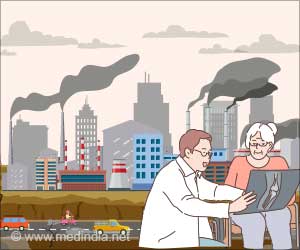Highlights:
- Indoor air pollution comes from a variety of sources, including cooking, cleaning products, building materials, smoking, and pet dander
- Exposure to indoor air pollution can cause a range of health problems, including respiratory problems, cardiovascular problems, cancer, allergies, and neurological problems
- Mitigating indoor air pollution can be achieved through proper ventilation, air purifiers, source control, regular cleaning, and radon testing
Indoor air pollution has been identified as a significant
health risk, particularly for those who spend a lot of time indoors. The problem is particularly acute in urban areas, where people are exposed to a range of pollutants from sources such as cooking, heating, and cleaning products.
The effects of indoor air pollution can range from short-term irritations to long-term health problems such as respiratory diseases, heart disease, and cancer. In this article, we will explore the sources of indoor air pollution, how it affects health, and what can be done to mitigate the risks.
‘Breathing clean air is crucial for our health. Learn how to mitigate indoor air pollution with proper ventilation, air purifiers, source control, regular cleaning, and radon testing in this comprehensive guide. #indoorairpollution #cleanair #healthylifestyle’
Advertisement
Sources of Indoor Air Pollution
Indoor air pollution can come from a variety of sources. These include:
Cooking:
Cooking with gas or wood can release pollutants such as nitrogen dioxide and particulate matter into the air. Cleaning products:
Many household cleaning products contain chemicals that can cause respiratory problems and irritate the skin and eyes. Building materials:
Some building materials, such as insulation and flooring, can emit volatile organic compounds (VOCs), which can cause headaches and nausea. Smoking:
Smoking indoors releases a range of harmful chemicals into the air, including carbon monoxide, formaldehyde, and benzene. Pet dander:
Pet dander can cause allergies and trigger asthma attacks in susceptible individuals.
Advertisement
How Does Indoor Air Pollution Affect Our Health?
Indoor air pollution can have a range of health effects, depending on the individual and the level and duration of exposure. Some of the most common health effects of indoor air pollution include:
Respiratory problems:
Exposure to pollutants such as nitrogen dioxide and particulate matter can cause respiratory problems, including coughing, wheezing, and shortness of breath. Cardiovascular problems:
Indoor air pollution has been linked to an increased risk of heart disease and stroke. Cancer:
Long-term exposure to certain indoor pollutants, such as radon and asbestos, can increase the risk of cancer. Allergies:
Indoor air pollution can trigger allergies and asthma attacks in susceptible individuals. Neurological problems:
Some indoor pollutants, such as carbon monoxide and lead, can cause neurological problems, including headaches, dizziness, and fatigue.
Advertisement
How to Reduce Indoor Air Pollution?
Fortunately, some steps can be taken to mitigate the risks of indoor air pollution. Some of these include:
Ventilation:
Proper ventilation is key to reducing indoor air pollution. Opening windows and using exhaust fans can help to remove pollutants from the air. Air purifiers:
Air purifiers can be effective at removing pollutants from the air. HEPA filters are particularly effective at removing particulate matter. Source control:
Eliminating or reducing the use of sources of indoor air pollution can help to reduce exposure. For example, switching to electric cooking or using natural cleaning products can reduce exposure to pollutants. Regular cleaning:
Regular cleaning can help to reduce the levels of pollutants in the air. This includes vacuuming and dusting to remove pet dander, as well as cleaning surfaces to remove chemical residues. Radon testing:
Radon is a naturally occurring radioactive gas that can seep into buildings from the ground. Testing for radon and taking steps to reduce exposure if levels are high can reduce the risk of lung cancer.
Source-Medindia












